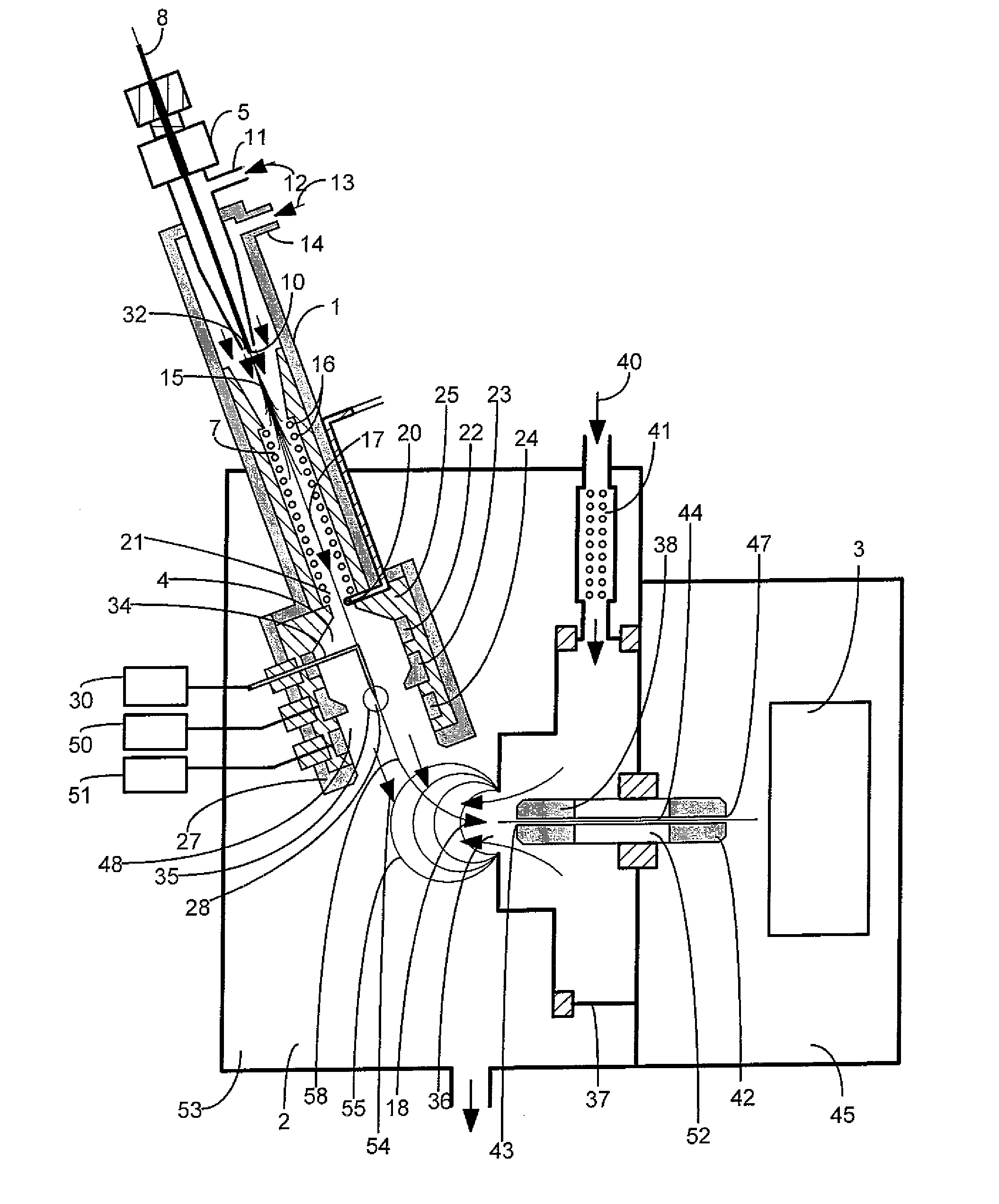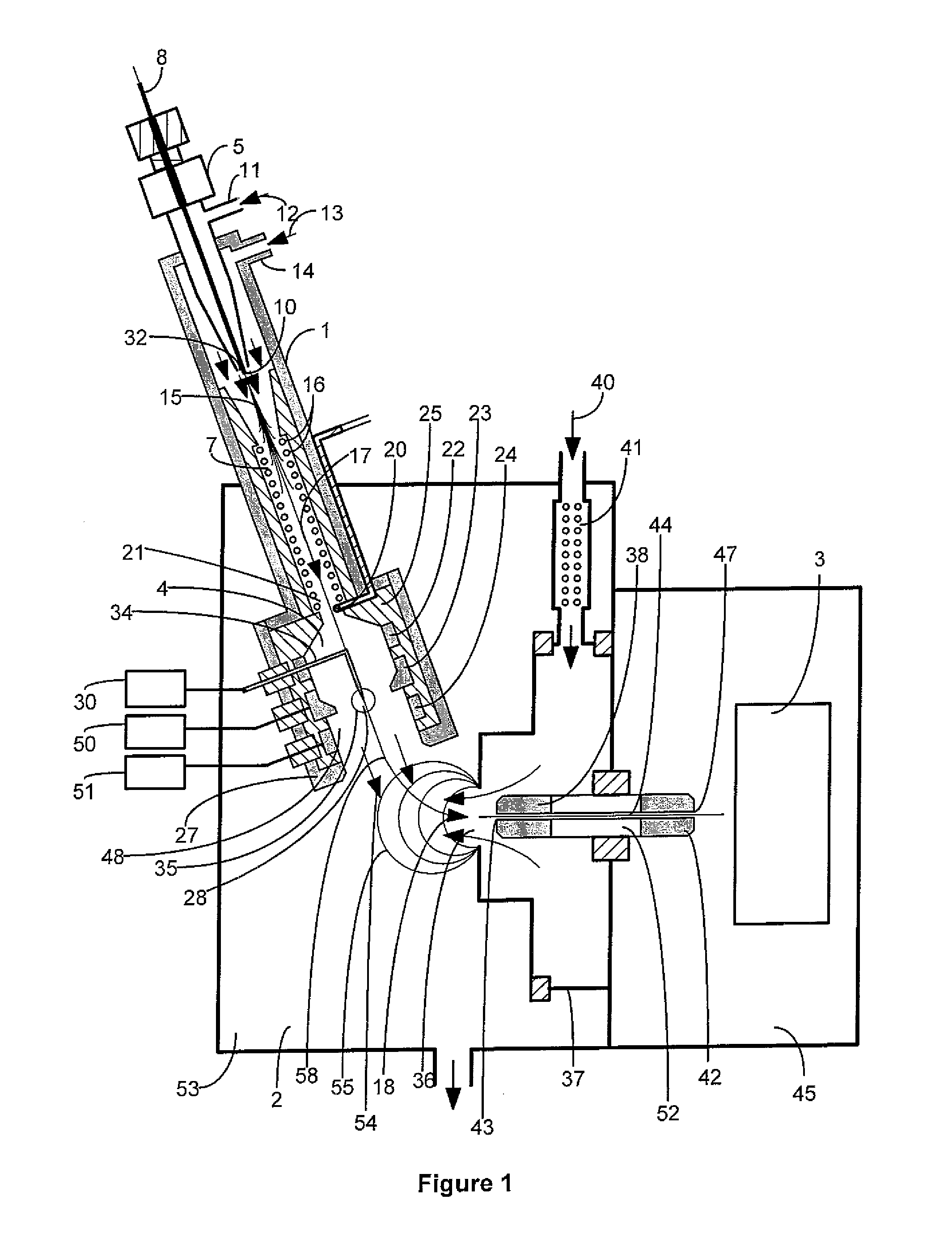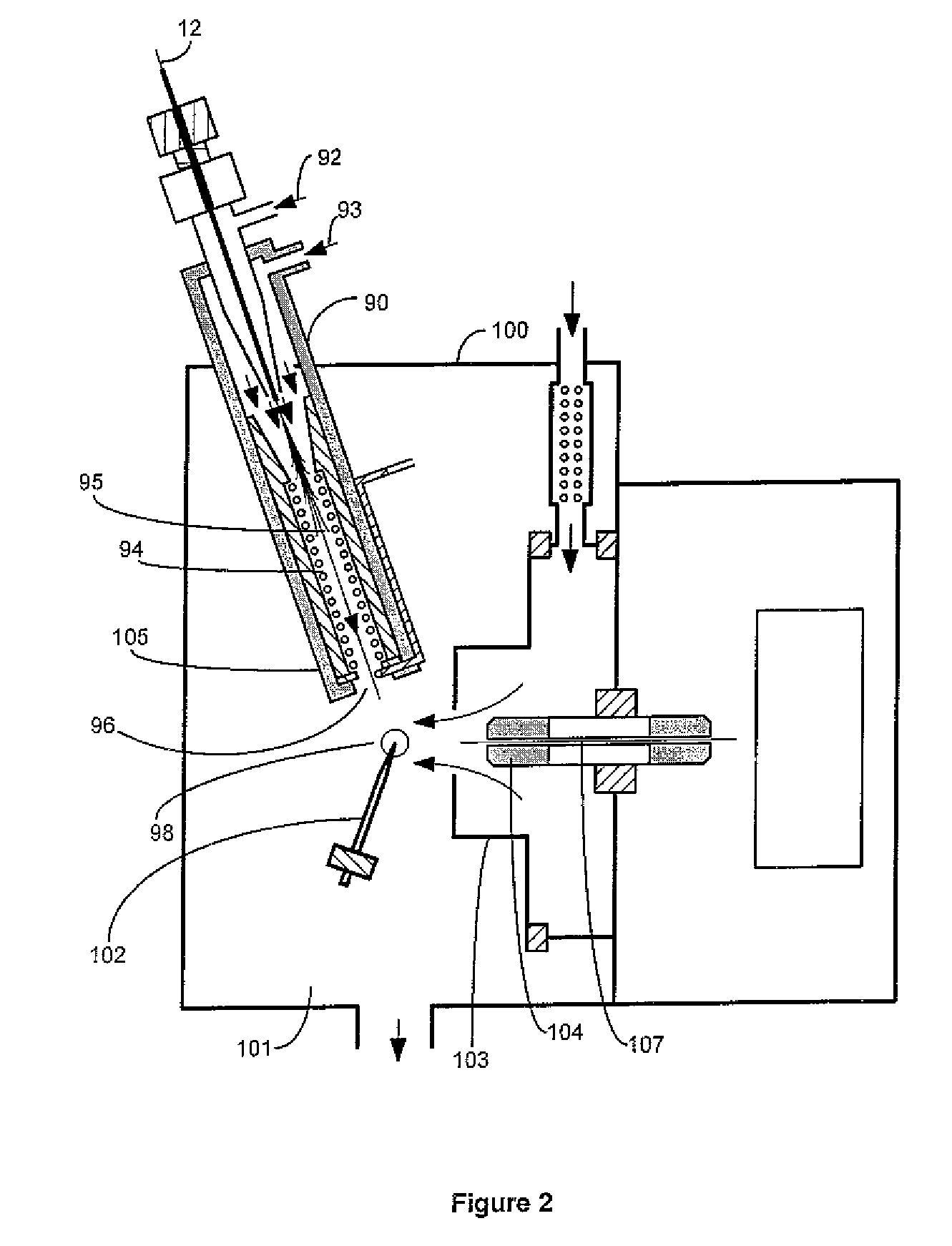Single and multiple operating mode ion sources with atmospheric pressure chemical ionization
a chemical ionization and single operating mode technology, applied in the field of single and multiple operating mode ion sources with atmospheric pressure chemical ionization, can solve the problems of less efficient apci/ms performance, inability to meet the above criteria simultaneously, and the apci source configuration described in u.s. patent no. 7,041,972 b2 does not provide optimal transport of analyte ions into vacuum, so as to minimize space charge defocusing
- Summary
- Abstract
- Description
- Claims
- Application Information
AI Technical Summary
Benefits of technology
Problems solved by technology
Method used
Image
Examples
Embodiment Construction
A preferred embodiment of the invention diagrammed in FIG. 1 comprises Atmospheric Pressure Chemical Ionization (APCI) probe 1 configured in Atmospheric Pressure Chemical Ionization source 2 interfaced to mass spectrometer 3. APCI probe 1 comprises sample solution inlet nebulizer assembly 5, heater or vaporizer assembly 7 and vapor flow channel assembly 4. Sample solution is introduced into APCI probe 1 through sample inlet tube 8. Pneumatic nebulization of the sample solution exiting inlet tube 8 at exit end 10 forms a spray of liquid droplets 15 that is directed into heater or vaporizer 7. Nebulization gas 12 is introduced through gas inlet 11 of nebulizer assembly 5 and exits through annulus 32 surrounding inlet tube 8 exit end 10. In addition, auxiliary gas flow 13 introduced though auxiliary gas inlet channel 14 supplements nebulizer gas flow 12 in carrying nebulized sample solution droplet spray 15 into and through vaporizer 7. Nebulized droplet spray 15 evaporates as it passe...
PUM
 Login to View More
Login to View More Abstract
Description
Claims
Application Information
 Login to View More
Login to View More - R&D
- Intellectual Property
- Life Sciences
- Materials
- Tech Scout
- Unparalleled Data Quality
- Higher Quality Content
- 60% Fewer Hallucinations
Browse by: Latest US Patents, China's latest patents, Technical Efficacy Thesaurus, Application Domain, Technology Topic, Popular Technical Reports.
© 2025 PatSnap. All rights reserved.Legal|Privacy policy|Modern Slavery Act Transparency Statement|Sitemap|About US| Contact US: help@patsnap.com



